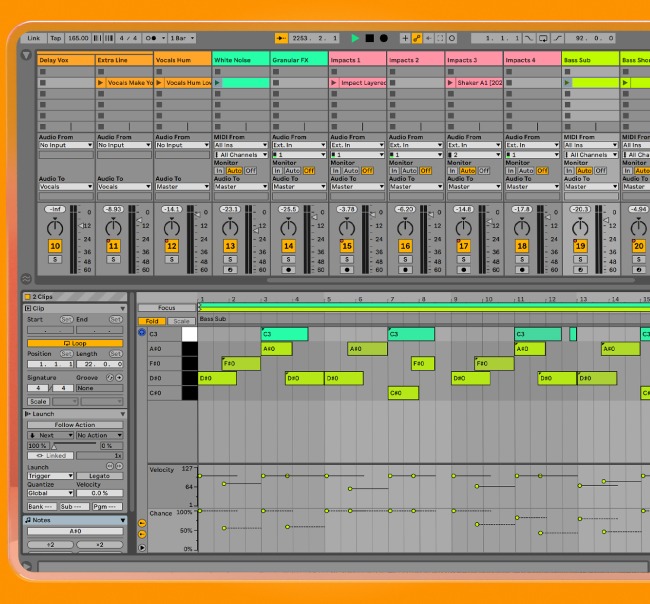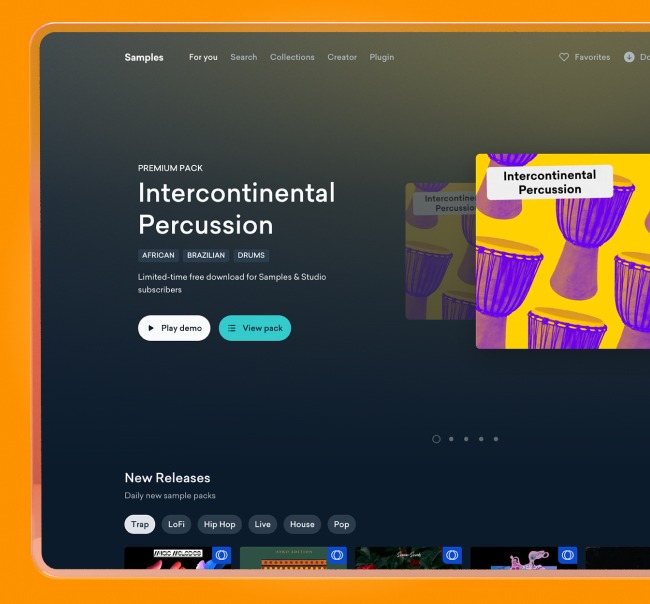
Live Looping: The 6 Best Looping Tools to Use Loops in Your Live Set
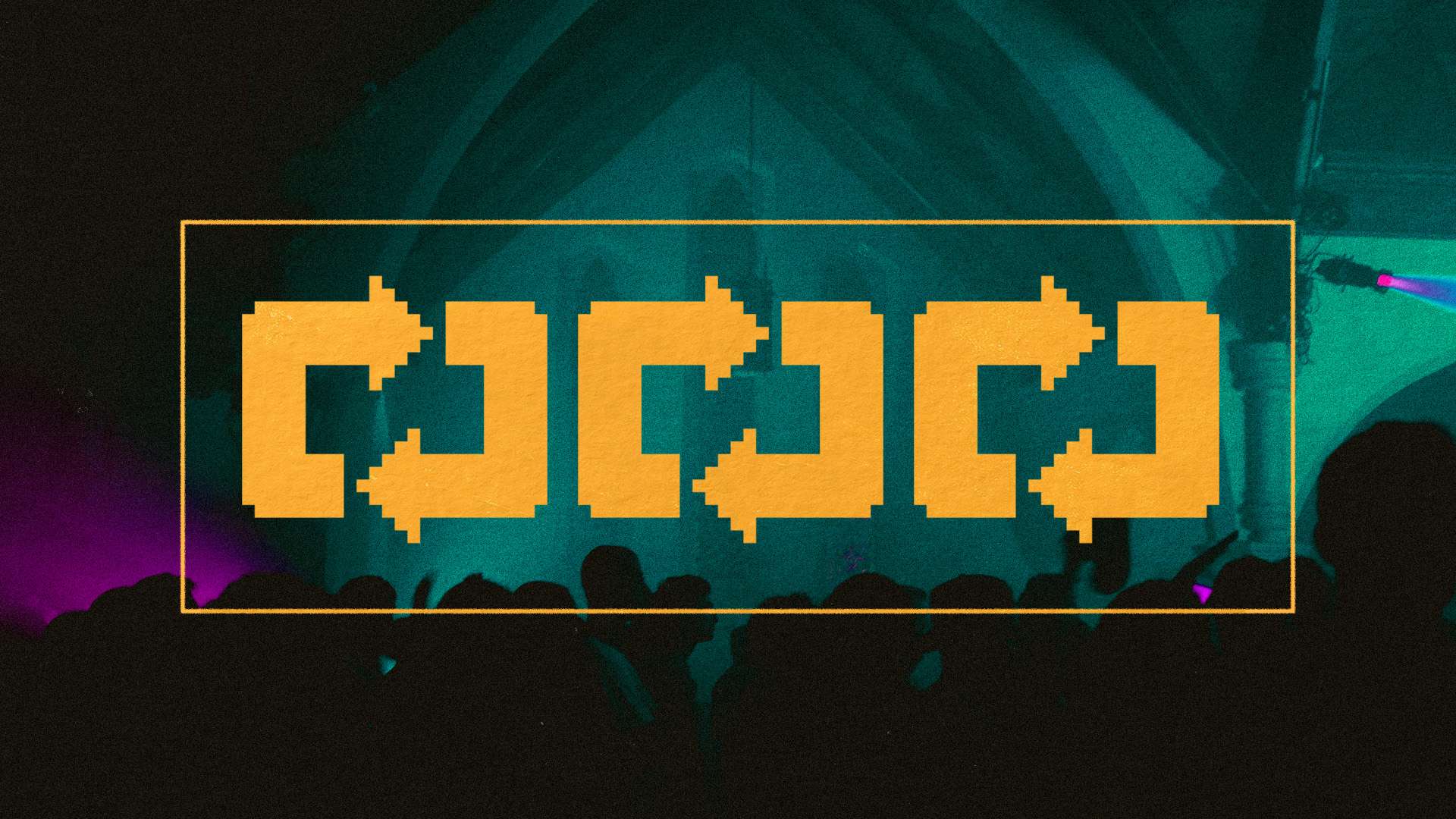
If there’s one thing that people love to hear in music it’s repetition. In fact, studies have shown that repeating, looping sounds grab people's ears and activate certain areas the brain—so it’s no wonder that live looping has become a well-loved part of modern music performance.
Since the early days of vinyl DJing, tape machines, to the invention of the looper pedal and the modern DAW—looping has grabbed the attention of music makers for a variety of reasons.
Live looping means the music never needs to end—or at least it means that something can keep going on as long as the artist wishes without any external input.
A great loop can serve as a palette that lives in the background of a performance, it can be an ambient sound that connects the dots between songs, it can be a grating sound front and centre.
Loops, especially in the live context, can be used in a myriad of ways for pretty much anything.
Live looping means the music never needs to end
There’s many ways to understand and approach live looping in music. So it’s valuable to learn what makes a live loop work and how live loops can be applied in your specific context.
In this article, we’ll explore the basics of live looping and share some ideas and tips for using it in your live and recorded performances.
Let’s dive in!
Theory guides, production tips, new free plugins, gear guides and more—delivered weekly
Keep up with the LANDR Blog.
What is live looping?
Live looping is the process of creating and using looped sounds during a live performance to perform along with. A live loop can be a drum track, layered guitars, vocals or any combination of looped sounds.
Often, musicians will use live loops to fill out the arrangement where the artist can’t play—it’s a practice that’s especially common for solo artists that don’t yet have a full band backing their tracks.
Some artists have perfected the artform so well that their entire musical sound is based on the practice—Reggie Watts is an example of artists who’s mastered live looping so well that he can invent songs on the spot using his mostly his voice, a loop pedal and maybe a keyboard.
How did live looping become so popular?
Live looping found its earliest forms during the reel-to-reel era of sound-on-sound recording when most music was recorded to tape before being pressed into vinyl.
Because tape could be physically looped and recordings on these could be edited or added to—many experimental artists began playing with tape loops both in recorded and live formats.
Fripp figured out how to record his guitar into a looping reel-to-reel to create a disorienting loop effect that sounded otherworldly.
Robert Fripp famously pioneered “Frippertronics” when he figured out how to record his guitar into a looping reel-to-reel to create a disorienting loop effect that sounded otherworldly.
Other artists used tape loops to create mind-bending patterns that went in and out of phase—Brian Eno and Steve Reich, in particular, pioneered looping tapes and even performed them live.
But the “Black Box” looping reel-to-reels that Les Paul and other engineers had developed were too big and expensive to viably be used by the masses in live environments.
It wasn’t until 2001, when the Boss RC-1 Loop Station pedal became massively available as an affordable loop pedal that had lots of sampling space that live looping could easy learned and used by anyone.

Many musicians will remember what it meant to get their hands on one of these pedals—the ability to sing or play something on guitar or keyboard and then hear back in a loop was powerful.
Whether you wanted to hear your own ideas and jam with them or if you had an entire arrangement that you wanted to put together—live looping opened the minds of many artists.
A lot of great music spawned from this era and it became common to see solo acts big and small use live looped parts on stage in various ways.
Animal Collective, for example, still employs many live looping techniques in their live sets.
6 tools to approach live looping in your music
Live looping can be really difficult, especially if you’re relying on a stompbox to create your loops.
You need to have a good sense of rhythm in terms of both hitting record and play for the duration of your loop, and understanding how long your arrangement should be so everything fits together.
So if you’re making rhythmic live loops you need to practice counting bars and stomping the pedal at the right time—otherwise your loops will sound wonky and out of sync.
Of course, there’s plenty of ways to experiment with loops that don’t require precise rhythmic movements—turning up the reverb and recording notes and chords into your looper is always a satisfying and fun activity.
If you’re wondering what today’s best live looping devices are to help you make your live loops, here’s 5 live of the best live looping pedals, grooveboxes and software applications to help you do it.
1. Boss RC-30

Let’s start with the first looper pedal to really make its waves in the mass market—the Boss RC-30 which launched in 2011.
The first looper pedal to really make its waves in the mass market—the Boss RC-30
If you’re looking for a tried and true loop pedal that’s durable and will stand the test of time, the RC-30 might be your best bet.
It’s got a handful of effects and tons of loop memory plus it’s a fairly intuitive system to use.
Before buying new, check out the used market for this since this pedal has been in production for quite some time and there are usually a handful available.
2. Line 6 DL4

The Line 6 DL4 is arguably the most legendary looper pedal—it’s been used by live looping legends like Animal Collective and Reggie Watts for years.
It’s been used by live looping legends like Animal Collective and Reggie Watts for years
That’s because looping is only one of its features—the pedal is a fully fleshed delay pedal with a ton of delay patterns, settings and a great overall sound.
It makes sense to combine a digital delay with a looper since they’re both doing essentially the same thing—I own this pedal and love how I can get a great delay sound and have the option to start a loop whenever I want.
You can find old versions of the Line 6 DL4 on many used markets—but the pedal maker recently reissued a MkII version of the pedal with a ton of new features and has received good reviews.
3. Ableton Live
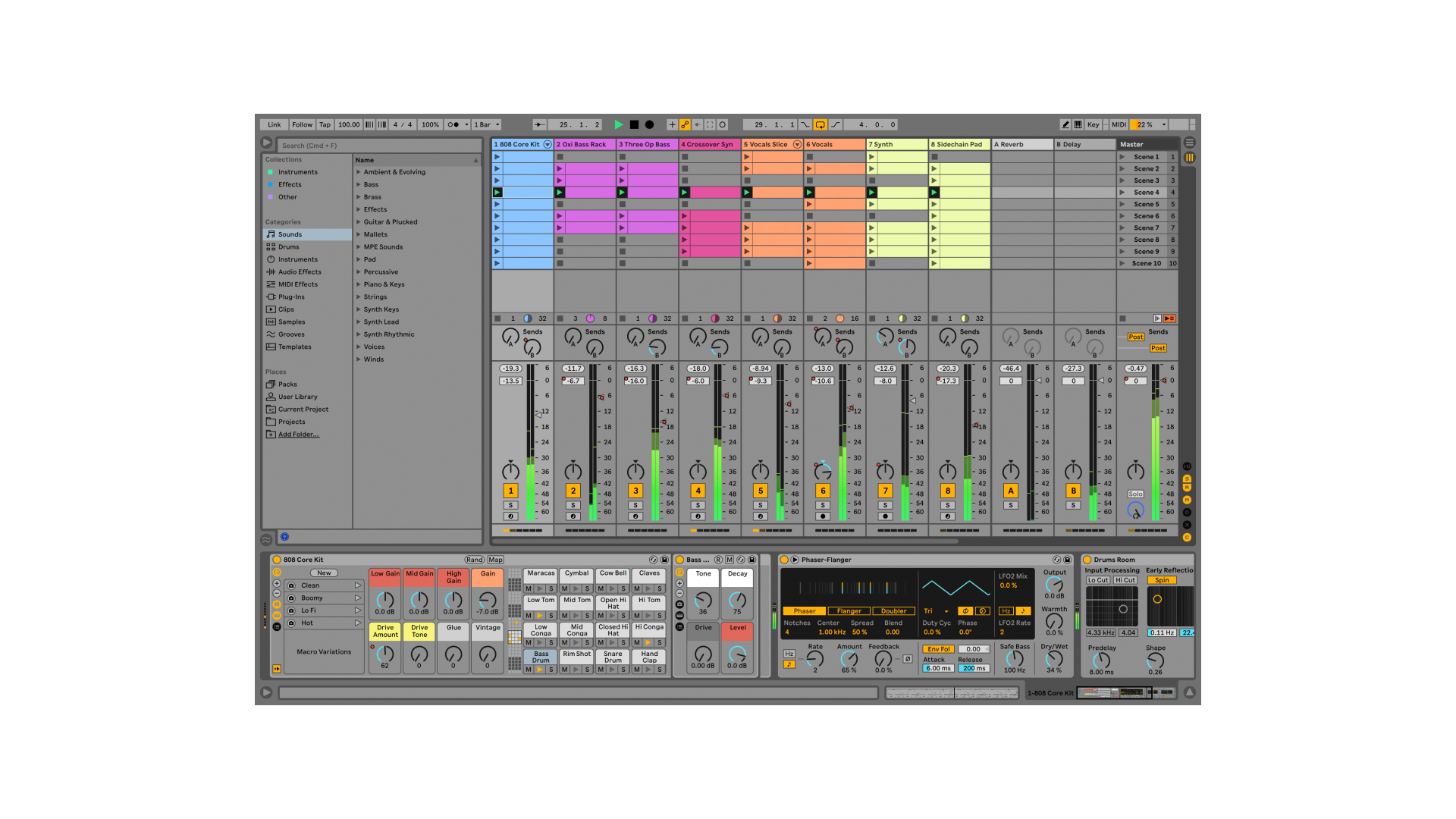
Moving away from guitar-centric pedals, we’ve got Ableton Live—a software-based DAW that was almost entirely designed around loops.
Ableton essentially set out to be the best looper pedal ever made in a software format. But, it’s much more than a pedal and can be used to loop to literally any software instrument you can think of.
Its session view features make it super easy to start arranging ideas with different loops and hear how different combinations sound.
Plus, with Push—the MIDI controller Ableton designed for its DAW—creating, editing and arranging loops live is incredibly easy and fun.
So if you’re really looking to get into music production, or if your set relies heavily on live looping electronic instruments like synths and drums, Ableton with its Push controller might be your best bet.
🧠 Hot tip
4. Cableguys – Timeshaper 2

Here’s a very unique looper tool that offers a ton of ways to get creative with whatever you’re looping.
Timeshaper is a very powerful for shifting, looping and controlling time in your music.
Among its many uses, it’s great for finding unique ways of looping drums and melodic parts.
🧠 Hot tip
5. Boss RC-505
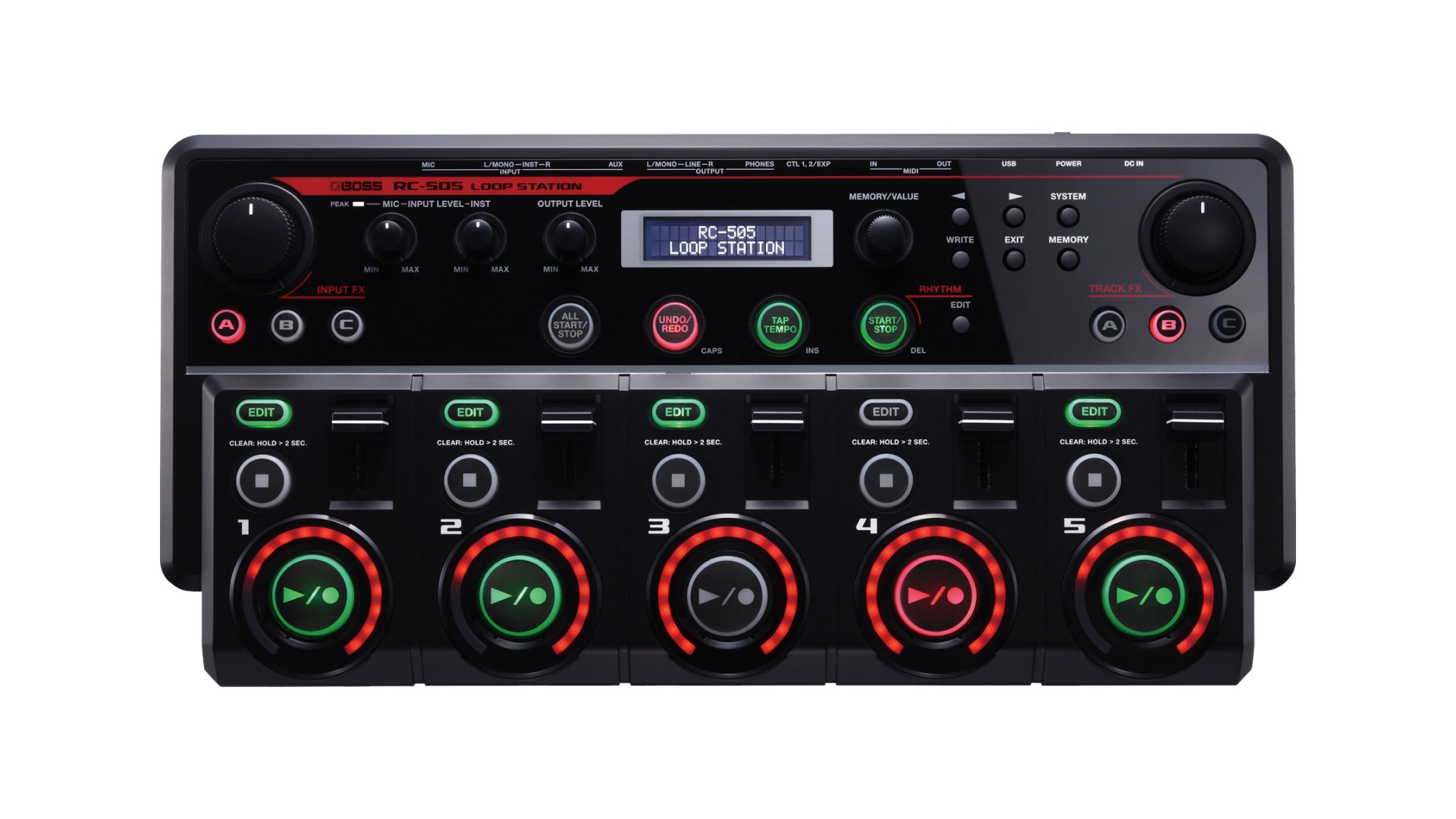
The RC-505 Loop Station is Boss’s fully built-out looper box. It’s designed for use well beyond the limitations of a standard guitar pedal.
Featuring its large button “hand pedal” design with five independent tracks it’s made for beatboxers, vocalists or instrumentalists to record, start and stop a loop by slapping the button.
Each track can be recorded over with a near-infinite number of overdubs and each track can send audio to an effects strip with a huge bank of various effects.
This is the pedal used by serious live loopers like Marc Rebillet and the like.
So if your budget can handle it and you’re ready for a high-caliber live looper, this is the machine for you.
6. MPC Live

Moving into groovebox territory, the MPC Live is definitely well suited for live looping.
In general, most grooveboxes and drum machines are definitely capable of working with loops in the live context—they usually come with sequencers and sample loopers to make it super easy to work with loops.
The MPC Live in particular comes with a highly visual interface with tons of ability to write, record and play loops in a live context.
It’s a bit reductive to just say that the MPC Live is just a live looper
Of course, it’s a bit reductive to just say that the MPC Live is just a live looper—the machine is a fully fleshed-out music production station that’s designed to make it possible to write entire tracks without a computer.
But, as a live looper, this groovebox will certainly get you on the right path.
7. LANDR Chromatic

Looping plugins have become more and more popular with the increasing availability of loop sample marketplaces.
Chromatic is the new loop-based plugin from LANDR and while we’re a little bit biased, we think it’s a great live looping plugin for creating tracks and starting new ideas whether you’re in the studio or on stage.
With Chromatic you get access to curated loops from real artists that you make into your own ideas.
The plugin comes with each set of loop mapped to a keyboard that allows you to manipulate and effect the loops in real-time—so you can start creating your own ideas and making your own tracks.
Stay in the loop
Live looping changed the way music is written, practiced and performed.
Whether you’re writing ideas on guitar at home, creating ambient textures with an instrument of choice, practicing your beatbox chops or looping vocal harmonies—there’s tons of uses for live looping in music.
Live looping is an impressive and inspiring tool that’ll elevate your live set—whether you have a backing band or not.
So if you’re giving interested in giving looping a try in your own music, keep these things in mind and don’t be afraid to experiment!
Gear guides, tips, tutorials, inspiration and more—delivered weekly.
Keep up with the LANDR Blog.
